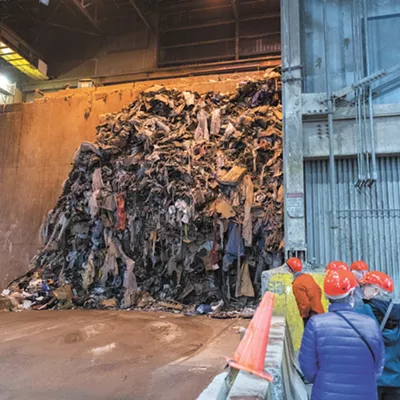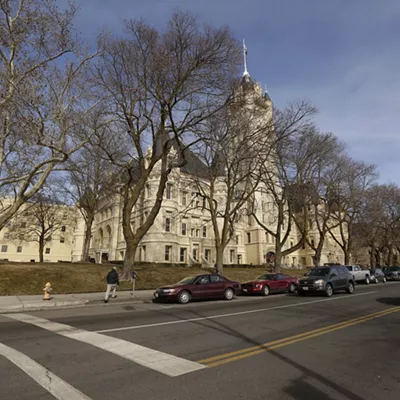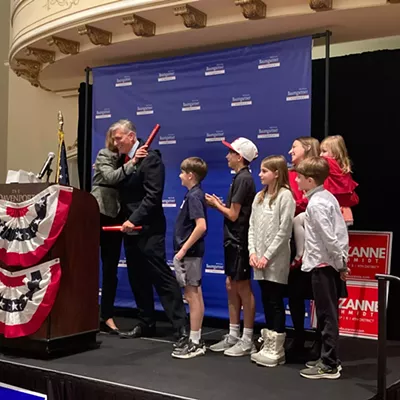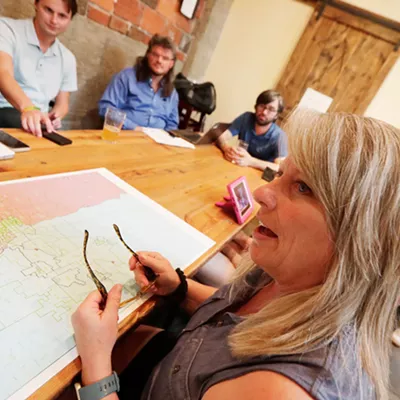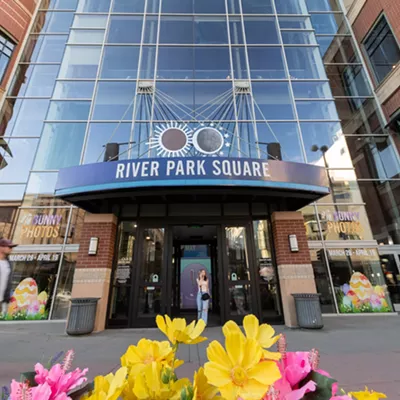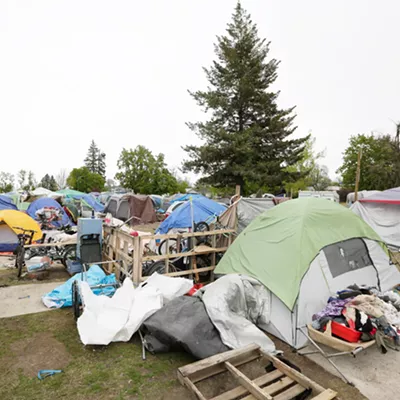
Eight years ago, near the start of the recession, Judy and Bill Moxley bought five acres of land north of the city for $69,000. There, in the quiet, serene country with a couple of friendly neighbors, they would build a single story home. There, they thought, they would grow old together.
A few years passed with no construction, as they weren't immediately ready to build. But then, last year, the Washington State Supreme Court delivered what the Moxleys thought would be a death blow to their dream. Known as the Hirst decision, the court ruling blocked the retired couple from getting a building permit, because Spokane County couldn't say water from a domestic well would be legally available for the home.
"We thought we didn't have any hope," Judy Moxley tells the Inlander. "We thought we had all this money invested in five acres, and it had become worthless."
The court decision was supported by environmental groups like Seattle-based Futurewise, which brought the original litigation. In areas of the state like the Little Spokane River Watershed, an area north of Spokane that has low groundwater levels and strict regulations for obtaining water rights, the decision effectively halted any new development.
Officials at Spokane County, however, weren't giving up. The county continued looking for ways to allow for private development in the Little Spokane watershed, where the Moxleys bought their five acres.
Late last year, the county announced it would set up a water bank. In December, the county announced it reached an agreement that would allow it to offer building permits in 40 percent of the Little Spokane River Watershed. It meant that people looking to build in that area could buy a certificate to use that water, enabling them to legally get a building permit.
It meant, despite the Hirst decision, it's once again possible under state law for the Moxleys to build their retirement home.
The Moxleys are one of 32 applicants for a water bank certificate. It's a solution that Spokane County officials like Mike Hermanson, water resources manager, started working on years ago, before the Hirst decision even went into effect. And it allows for private development in North Spokane, even if state lawmakers maintain the Hirst decision as the law.
"We're reviewing legislation and trying to figure out, how can we represent Spokane County's best interest?" Hermanson says.
TRICKLE DOWN THEORY
The Hirst decision carried two major impacts for Spokane County. For one, it shifted responsibility for processing permits for water rights from the Department of Ecology to the county. Secondly, for the county to grant a permit, it had to make sure a private well on that property would not infringe on another property owner's water.
For the Little Spokane River Basin, those parameters shut down any chance of Spokane County issuing a permit for a new home in the last year.
However, the county had the idea for a water bank in its back pocket years before the Hirst decision. Hermanson says the county started looking at water rights available for purchase in 2014. The Hirst case was in litigation then, and he says the county had an idea what direction it was headed.
"The writing was on the wall," Hermanson says.
The idea is pretty straightforward: Since it's impossible to obtain a new water right, the county instead buys a water right from someone already using it for agriculture. When purchased, the county stops using the water from that water right. By not using it, more water flows downstream, making that water available for other property owners — without further draining the water supply of the watershed. So the county can then offer certificates for water use, up to the amount being saved by not using the original water right that the county purchased.
The trick is finding a water right that will impact the largest area possible. The location of one water right purchased by the county for the water bank, for example, is further upstream on the northside of the Little Spokane River Basin. Any water downstream of that water right, as determined by the county and the Department of Ecology, would be available for the water bank. The county and Department of Ecology agreed in December to place the water rights purchased into a water bank that encompasses 40 percent of the Little Spokane watershed.
Hermanson and the rest of the water resources department will continue to find water rights allowing for permits in the rest of the 60 percent of the Little Spokane watershed. Putting together which water rights will impact which area is a little like a puzzle, he says.
Keith Stoffel, the Department of Ecology's eastern region water resources section manager, praised Spokane County for the work. It's not the first county in the state to set up a water bank, but Stoffel says about a half dozen other counties have already applied for grants to set up a water bank, citing Spokane County as an example of what they want to do.
"Their forward-thinking allowed the county to develop a solution that provides a legal supply of water for rural household use while also protecting the Little Spokane River," Stoffel says.
NOT A PERFECT SOLUTION
The three-member Board of Spokane County Commissioners will continue to advocate for a legislative solution to the Hirst decision. Commissioner Al French, in a press release, floated the theory that it could involve a water bank in all areas of the state with instream flow rules, or rules like the Little Spokane watershed has.
For the dozens of property owners looking to build a home, the water bank solution that the county came up with was a huge relief. It not only makes it possible to obtain a building permit, but it increases the property value in the Little Spokane River Basin after it had dipped this year.
But it doesn't solve all the problems for those hoping to develop homes north of Spokane. For the Moxleys, who are in their 70s, the water bank from Spokane County took away their biggest obstacles, but there are others: They still need to make sure their well wouldn't impair a neighbor, and the certificate for the water bank costs $5,000. The increased costs, she says, has changed their house plans.
"By the time this is all said and done, I'm not sure at our age if we're gonna sell the land or put our house up," Judy Moxley says. "We just don't know how long any of this is gonna take." ♦



